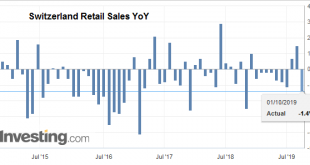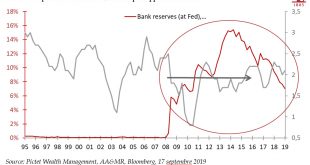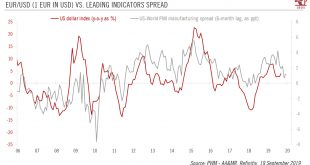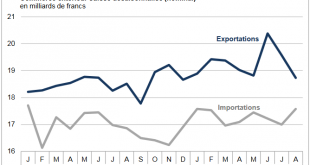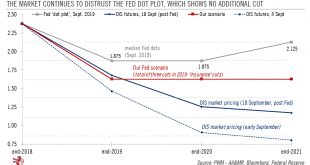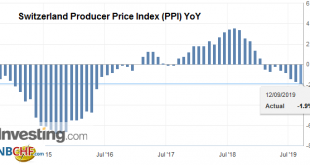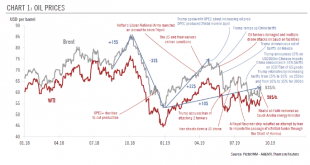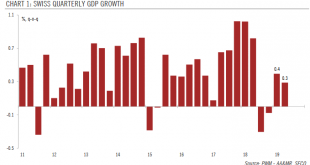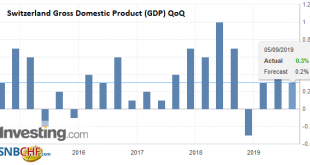01.10.2019 – Turnover adjusted for sales days and holidays rose in the retail sector by 1.3% in nominal terms in August 2019 compared with the previous year. Seasonally adjusted, nominal turnover fell by 1.6% compared with the previous month. These are provisional findings from the Federal Statistical Office (FSO). Real turnover adjusted for sales days and holidays fell in the retail sector by 1.4% in August 2019 compared with the previous year. Real growth takes...
Read More »MMT, la nouvelle théorie en vogue à Washington
L’influence du ‘Modern Monetary Theory’ est susceptible d’augmenter dans les milieux économiques et politiques américains. La nouvelle théorie monétaire (Modern Monetary Theory/MMT), théorie macroéconomique défendue par des économistes hétérodoxes, commence à faire son chemin aux Etats-Unis. Cette théorie adopte une approche expérimentale de l’économie, basée sur la conviction fondamentale que la monnaie est créée par le gouvernement à travers les dépenses...
Read More »Euro/USD: things look pretty stable
Competing forces mean the two currencies could remain in a holding pattern for a while. The euro has remained relatively stable relative to the US dollar in the wake of the European Central Bank (ECB) and US Federal Reserve (Fed) September policy meetings. Growth and interest rate differentials, two key drivers for the EUR/USD rate, suggest things could stay this way. The growth differential (based on leading indicators) has barely budged since March after a sharp...
Read More »Swiss Trade Balance August 2019: the decline in exports continues
We do not like Purchasing Power or Real Effective Exchange Rate (REER) as measurement for currencies. For us, the trade balance decides if a currency is overvalued. Only the trade balance can express productivity gains, while the REER assumes constant productivity in comparison to trade partners. Who has read Michael Pettis, knows that a rising trade surplus may also be caused by a higher savings rate while the trade partners decided to spend more. This is partially...
Read More »Powell plays the ‘insurance’ card again
In spite of internal divisions, the Fed may go for a third rate cut in October and step in to alleviate pressure in repo market. The Federal Reserve (Fed) cut rates by 0.25% on Wednesday, as widely anticipated. The new fed funds target range is 1.75%-2.00%. The interest rate on banks’ excess reserves was cut by 0.30% to 1.80%. Fed Chairman Jerome Powell again justified this second rate cut since July as “insurance” against risks to the US outlook – mostly the weak...
Read More »Swiss Producer and Import Price Index in August 2019: -1.9 percent YoY, -0,2 percent MoM
The Producer Price Index (PPI) or officially named “Producer and Import Price Index” describes the changes in prices for producers and importers. For us it is interesting because it is used in the formula for the Real Effective Exchange Rate. When producers and importers profit on lower price changes when compared to other countries, then the Swiss Franc reduces its overvaluation. The Swiss PPI values of -6% in 2015 (see below), compared to -3% in Europe or -1% in...
Read More »Oil prices and the global economy
Low oil prices are good news for disposable income. But they also reflect the risk of oversupply in a world where growth indicators continue to point down. Events since Trump first threatened increased tariffs in 2017 provide a textbook example of how tariffs are transmitted through the global economy. First, the uncertainty they create hurts sentiment. Then, as uncertainty lasts, investments are postponed. Indeed, we are currently seeing a progressive decline in...
Read More »Swiss National Bank – Between a rock and a hard place
We expect the Swiss National Bank to stay on hold at its next policy meeting, but a lot will depend on ECB and Fed meetings. Uncertainties and global slowdown are weighing on business investment in Switzerland, while household consumption growth has been slowing. Swiss GDP rose by 0.3% q-o-q in Q2 (down from 0.4% in Q1), mainly due to spending in healthcare, housing and energy. Previous quarters were revised down and now show that Switzerland was in a technical...
Read More »“The Eurozone faces the worst combination of economic and systemic risk”
Eurozone faces the worst combination Interview with Alasdair Macleod: The past few months have been an exciting time for gold investors, as the precious metal has seen a spike in demand after serious economic concerns and geopolitical tensions unsettled the markets. Many mainstream analysts have pointed to a number of recent events, from the US-China trade war escalations to the inverted yield curve, to explain the recent gold rally. Although these developments...
Read More »Switzerland GDP Q2 2019: +0.3 percent QoQ, -0.2 percent YoY
Switzerland’s GDP rose by 0.3% in the 2nd quarter of 2019, after increasing by 0.4% (revised) in the previous quarter.1 The development of domestic and foreign demand was weak, as in other European countries, which had a particularly negative impact on the service sectors. Switzerland Gross Domestic Product (GDP) QoQ, Q2 2019(see more posts on Switzerland Gross Domestic Product, ) Source: Investing.com - Click to enlarge Switzerland’s GDP rose by 0.3% in the...
Read More » Swiss Economicblogs.org
Swiss Economicblogs.org

